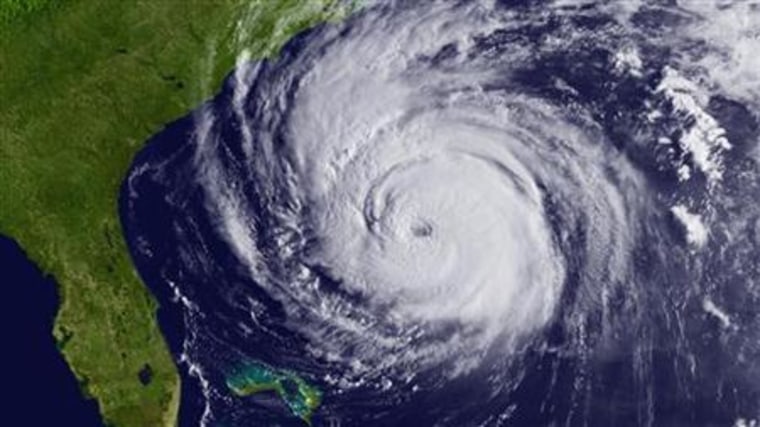Residents along the Gulf and East coasts should expect an above average Atlantic hurricane season, U.S. forecasters announced Thursday.
Between 12 to 18 named storms are likely during the season that typically runs from June 1 to Nov. 30, according to the 2011 outlook by the National Oceanic and Atmospheric Administration.
Of those six to 10 are likely to be hurricanes, and three to six of those could become major hurricanes, ranging from Category 3-5.
Last year's hurricane season was one of the busiest on record with 19 named storms, including 12 hurricanes.
But no major hurricane, i.e, Category 3 or higher, has made a U.S. landfall since Category 3 Hurricane Wilma struck Florida in 2005. Hurricane Ike caused extensive damage in September 2008 when it roared ashore in Galveston, Texas, but it hit as a strong Category 2 storm with top winds around 109 mph. Ike caused $10 billion in damage in Texas, Louisiana and Arkansas, making it the third-costliest storm after Hurricanes Katrina in 2005 and Andrew in 1992, according to the National Hurricane Center.
The lack of a major hurricane making U.S. landfall in recent years led officials to voice fear that locals won't take this season seriously.
"The United States was fortunate last year," NOAA chief Jane Lubchenco said in a statement. "Winds steered most of the season’s tropical storms and all hurricanes away from our coastlines. However we can’t count on luck to get us through this season. We need to be prepared, especially with this above-normal outlook."
The factors indicating an above average season were three, NOAA said:
- Sea surface temperatures where storms often develop and move across the Atlantic are up to two degrees Fahrenheit warmer than average.
- La Nina, while expected to dissipate by June, is likely to still have an impact by reducing wind shear, which helps hurricanes form.
- Since 1995, ocean and atmospheric conditions have been conducive to more active Atlantic hurricane seasons.
An average season, as defined by NOAA, has 11 named storms and six hurricanes, of which 2 are major.
On April 6, Colorado State University researchers issued their own forecast, predicting an above average season of 16 named storms.
That’s one storm less than what the team forecast last December.
"We have reduced our forecast slightly from early December due to a combination of recent ocean warming in the eastern and central tropical Pacific and recent cooling in the tropical Atlantic," said Phil Klotzbach of the CSU Tropical Meteorology Project.
Nine of the storms are expected to turn into hurricanes, with five developing into major hurricanes with sustained winds of 111 mph or greater, CSU forecasters said.
While NOAA's outlooks do not try to predict U.S. landfalls, the CSU team did state its estimated probabilities for a major hurricane doing so:
- A 72 percent chance that at least one major hurricane will make landfall on the U.S. coastline (the long-term average probability is 52 percent).
- A 48 percent chance that a major hurricane will make landfall on the East Coast, including the Florida Peninsula (the long-term average is 31 percent).
- A 47 percent chance that a major hurricane will make landfall on the Gulf Coast from the Florida Panhandle west to Brownsville, Texas (the long-term average is 30 percent).
Klotzbach said the "primary uncertainty" about CSU's latest forecast stemmed from the possible warming of Pacific sea surface temperatures due to a possible El Nino weather phenomenon, which tends to lower the threat of storm activity in the tropical Atlantic.
"Right now we don't think one (El Nino) is going to develop but there are some signs that it (the Pacific) certainly has warmed quite a bit and there is that potential," Klotzbach said.
"In June, if El Nino really were to look like it's going to develop we'd have to lower our forecast quite a bit," he added.
The team will issue forecast updates on June 1 and Aug. 3.
